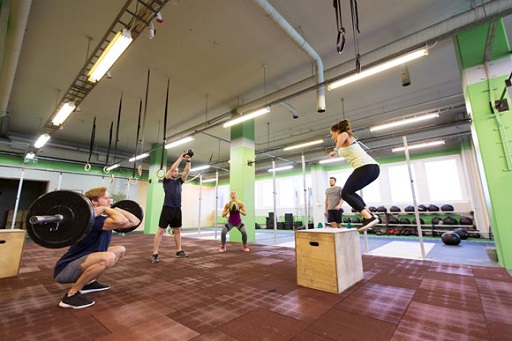3 Power
Power is closely related to two components of fitness: strength and speed. Power is effectively the product of strength and speed (Faigenbaum, 2017) and is the ability to execute strong explosive movement at speed. As such, speed, strength and power are often jointly identified in needs analyses as key components of fitness in certain sports and/or activities (such as rugby, weightlifting, sprinting or hammer-throwing).
In this section you will primarily be considering two power training methods (plyometric training and weight training) and the science behind them. Plyometric training refers to explosive jump training that involves fast, powerful movements that are preceded by a stretch or countermovement (Potach and Chu, 2016). Before you consider these power training methods in detail you need to look at the physiology and biomechanics involved.

